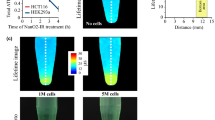Summary.
Significant technological advancements required for imaging physiological function in small animals have been achieved in the last few years. Dedicated small animals PET scanners are now achieving resolutions that approach the one obtainable by autoradiographic methods, while still maintaining enough detection sensitivity to reliably measure biologically relevant parameters such as binding potentials or rate constants. Such developments have enabled researchers to explore in-vivo rodent models of human disease. The future in imaging now lies in the development of multi-modality imaging approaches, while the big challenge in the next few years will be for the chemists to develop tracers that are more specific and reflective of the functional condition under investigation, while miniaturizing the chemical synthesis related instrumentation.
Similar content being viewed by others
Author information
Authors and Affiliations
Rights and permissions
About this article
Cite this article
Sossi, V., Ruth, T. Micropet imaging: in vivo biochemistry in small animals. J Neural Transm 112, 319–330 (2005). https://doi.org/10.1007/s00702-004-0272-2
Received:
Accepted:
Issue Date:
DOI: https://doi.org/10.1007/s00702-004-0272-2




